
![]()
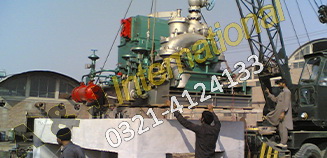
Power Generation Machinery & Services
 |
|
|
 Power Generation Machinery & Services |
| Home | Used Generators | Contact Us |
STEAM TURBINES BASIC INFORMATION

Various types of turbines are used for Power generation. A particular type of turbine is used in each area depending upon available options. For example, if strong winds are available at some location, Wind Turbine can be the best solution for Electricity Generation at that area.
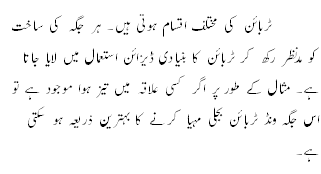 Diesel, Natural Gas and Furnace Oil are mostly used to drive Combustion turbines for Electricity generation at larger ratings, provided that these sources are available easily and at right price. Many Combustion Turbine IPPs are functioning in Pakistan.
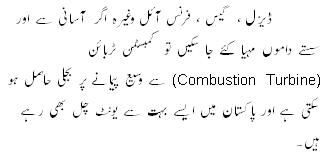 However, these fuel sources are not only expensive, but also a major source of pollution. Efforts are made through out the World to reduce dependence on Petroleum products.
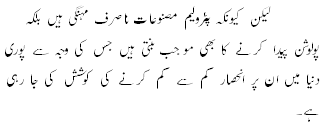 The major source of Electricity Generation in Pakistan are Dams. Water Turbines are rotated through water flow to produce electricity, providing free and vast energy.
This natural gift is not abundant anymore due to lack of water flow, Rain timings, Political issues, absence of funds and skill for machinery refurbishing, etc. Hence the load-shedding.
Steam Turbines Introduction
Power generated by steam turbines have lit the first light bulbs for over one and a half century. In fact, the first power plant (run by Thomas Edison using his dynamos and located at Pearl Street in New York City) was a CHP plant that generated power using a steam turbine. The excess steam was used to heat homes.
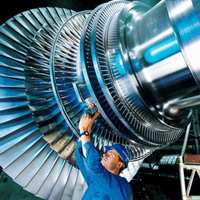 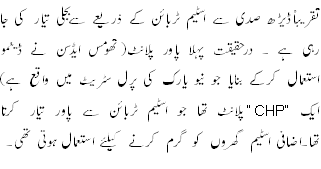 Because a steam turbine runs off of steam produced by a boiler, it can support many different types of fuels. Natural gas, coal, nuclear, wood, biomass, municipal solid waste and more can all be used to run a steam turbine. As a result, facilities that have an excess of waste products such as oil or wood tend to implement steam turbines. As the figure below indicates, current steam turbine CHP systems run off of a variety of fuels.
 Another attractive feature of steam turbines is that they can be modified to fit any CHP system. Therefore, the steam turbine can be fitted to match a facilities pressure and temperature requirements. Furthermore, steam turbines can be retrofitted into an existing steam system. Furthermore, water and steam are very well understood. Using the steam tables, we can know exactly the properties of our working fluids at certain temperatures and pressures. Therefore, steam is very predictable.
Brief Technological Description
Steam turbines are slightly different than other CHP prime movers in that they require a separate boiler or “HRSG” (Heat Recovery Steam Generator) to create its working fluid (steam). Sometimes, plants will already have a boiler producing steam for a process or to satisfy a heating/cooling load and rather than using a “pressure reducing valve” to “isenthalpically” reduce the pressure of the steam, they will run the steam through a “back pressure steam turbine” and generate electricity. In CHP applications, a boiler or HRSG will generate steam which will be put through a steam turbine. The steam turbine will produce electricity and the remaining exhaust steam can be used for hot water or heating/cooling. The diagram below summarizes a boiler/steam turbine cycle. 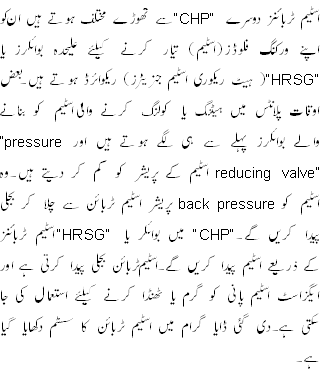 The basic process behind steam power generation is the “Rankine Cycle”. Water is heated until it is a saturated liquid. From there, it is compressed into steam. The steam is transferred to a turbine where the pressure of the steam is reduced (usually to sub atmospheric pressures) by expansion over the turbine blades. This process produces electricity. The low pressure steam is condensed back to a liquid. The water, now referred to as return water, is mixed with new water, referred to as “feedwater”, and pumped back to the boiler. The figure below shows a common diagram used to describe the Rankine Cycle.
 Types of Steam Turbines: There are basically two types of steam turbines: Condensing steam turbines are very economic and fuel efficient. These turbines are mostly used for large amount of power generation. Small industires where electricity unit rate is a basic issue, can also apply condensing steam turbine system. Non-condensing steam turbines are also referred to as “back pressure” steam turbines. Here, steam is expanded over a turbine and the exhaust steam is used for to meet a facilities steam needs. The steam is expanded until it reaches a pressure that the facility can use. The figure below shows the process of a back pressure steam turbine. 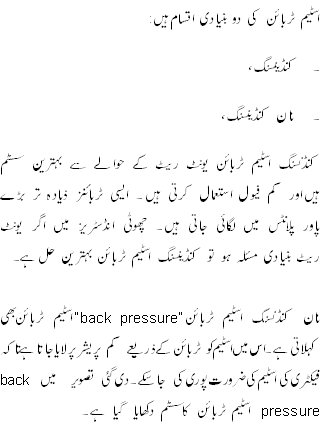 The other type of steam turbine used in CHP applications is called an extraction turbine. In these turbines, steam in extracted from the turbine at some intermediate pressure. This steam can be used to meet the facilities steam need. The remaining steam is expanded further and condensed. Extraction turbines can also act as admission turbines. In admission turbines, additional steam is added to the turbine at some intermediate point. The figure below schematically shows the process of an extraction steam turbine.
Waste heat from a steam turbine (either collected through the exhaust or from extraction), can be used for space heating or cooling, for process, or it can be used to create chilled or hot water. Steam turbines can also be part of a “combined cycle” process. In these processes, waste steam from an electricity producing process (i.e. waste steam produced by a gas turbine) is run through a steam turbine to produce more electricity. While this is very energy efficient, it is not considering CHP because no heating or cooling loads are satisfied in any part.
Impulse & Reaction:
Most modern steam turbines are a combination of the reaction and impulse design. Typically, higher pressure sections are impulse type and lower pressure stages are reaction type.
An impulse turbine has fixed nozzles that orient the steam flow into high speed jets. These jets contain significant kinetic energy, which the rotor blades, shaped like buckets, convert into shaft rotation as the steam jet changes direction. A pressure drop occurs across only the stationary blades, with a net increase in steam velocity across the stage.
As the steam flows through the nozzle its pressure falls from steam chest pressure to condenser pressure (or atmosphere pressure). Due to this relatively higher ratio of expansion of steam in the nozzle the steam leaves the nozzle with a very high velocity. The steam leaving the moving blades is a large portion of the maximum velocity of the steam when leaving the nozzle. The loss of energy due to this higher exit velocity is commonly called the "carry over velocity" or "leaving loss".
In the reaction turbine, the rotor blades themselves are arranged to form convergent nozzles. This type of turbine makes use of the reaction force produced as the steam accelerates through the nozzles formed by the rotor. Steam is directed onto the rotor by the fixed vanes of the stator. It leaves the stator as a jet that fills the entire circumference of the rotor. The steam then changes direction and increases its speed relative to the speed of the blades. A pressure drop occurs across both the stator and the rotor, with steam accelerating through the stator and decelerating through the rotor, with no net change in steam velocity across the stage but with a decrease in both pressure and temperature. Net result reflecting the work performed in the driving of the rotor.
Casing or Shaft Arrangements
These arrangements include single casing, tandem compound and cross compound turbines.
Warming & Starting
When warming up a steam turbine for use, the main steam stop valves (after the boiler) have a bypass line to allow superheated steam to slowly bypass the valve and proceed to heat up the lines in the system along with the steam turbine. Also a turning gear is engaged when there is no steam to the turbine to slowly rotate the turbine to ensure even heating to prevent uneven expansion. After first rotating the turbine by the turning gear, allowing time for the rotor to assume a straight plane (no bowing), then the turning gear is disengaged and steam is admitted to the turbine, first to the astern blades then to the ahead blades slowly rotating the turbine at 10 to 15 RPM to slowly warm the turbine. 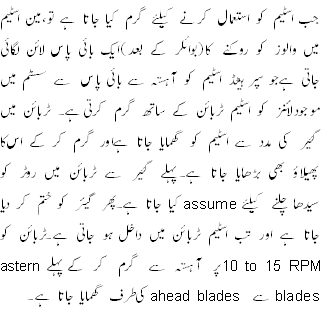 Maintenance Problems with turbines are now rare and maintenance requirements are relatively small. Any imbalance of the rotor can lead to vibration, which in extreme cases can lead to a blade letting go and punching straight through the casing. It is, however, essential that the turbine be turned with dry steam. 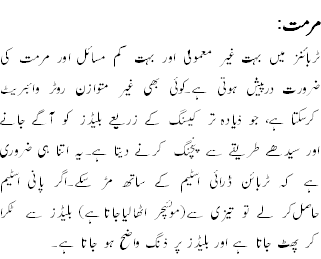 Speed regulation The control of a turbine with a governor is essential, as turbines need to be run up slowly, to prevent damage while some applications (such as the generation of alternating current electricity) require precise speed control. Uncontrolled acceleration of the turbine rotor can lead to an over-speed trip, which causes the nozzle valves that control the flow of steam to the turbine to close.
Efficiencies Efficiencies of steam systems are hard to calculate. 40-50% is a number that is usually attached to steam turbine efficiencies. However, this number could be misleading because it does not take into account boiler efficiencies. Boilers are generally 80-85% efficient. If such a boiler is included in the steam system, then the efficiency of the steam system drops to 32-42.5%. However, if the boilers are already in place and a steam turbine is added later, then generally the boiler efficiency need not be considered. Another point to consider is if a back pressure steam turbine is replacing a pressure reducing valve or steam blow off practice, then any energy you can get is energy efficient. The reasoning behind this is that the plant was previously loosing energy either by isenthalpic expansion or by simply blowing excess steam away. Now, the plant is using the energy and therefore, when compared to before, the plant is much more energy efficient. 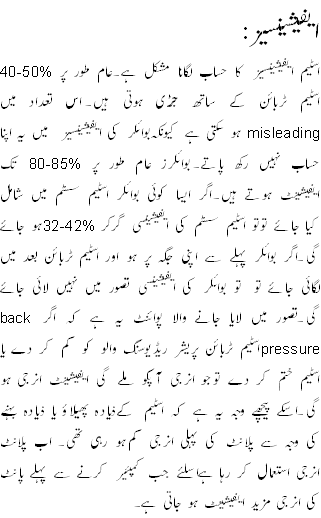 Emissions Steam turbines do not emit anything themselves. However, the steam generator emits pollutants. Therefore, the emissions from a steam turbine system are highly variable and depend on the type of fuel being used to create the steam and the method by which steam is created. Boilers will emit NOx, SOx, PM, CO, and CO2. 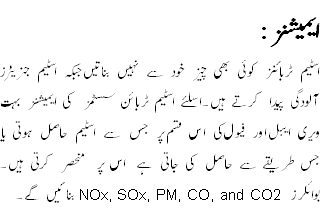 There are a variety of emissions control technologies for steam systems. Some of these include:
-combustion control, -using low nitrogen fuel oil, -inserting water/steam to lower NOx, -selective non-catalytic reduction,
|
| Home | Steam Power Plants |
| New Generators | Boilers |
| A & J Brand Generators | Solar Power |
| Used Generators | Islamic Rules |
| Furnace Oil Generators | Power Calculator |
| Repairing & Parts | Contact Us |
| Useful Info |
Call Now: 0300-4006955
|
|
Copyright © 2020-21 A & J International. All rights reserved - - Site Map |